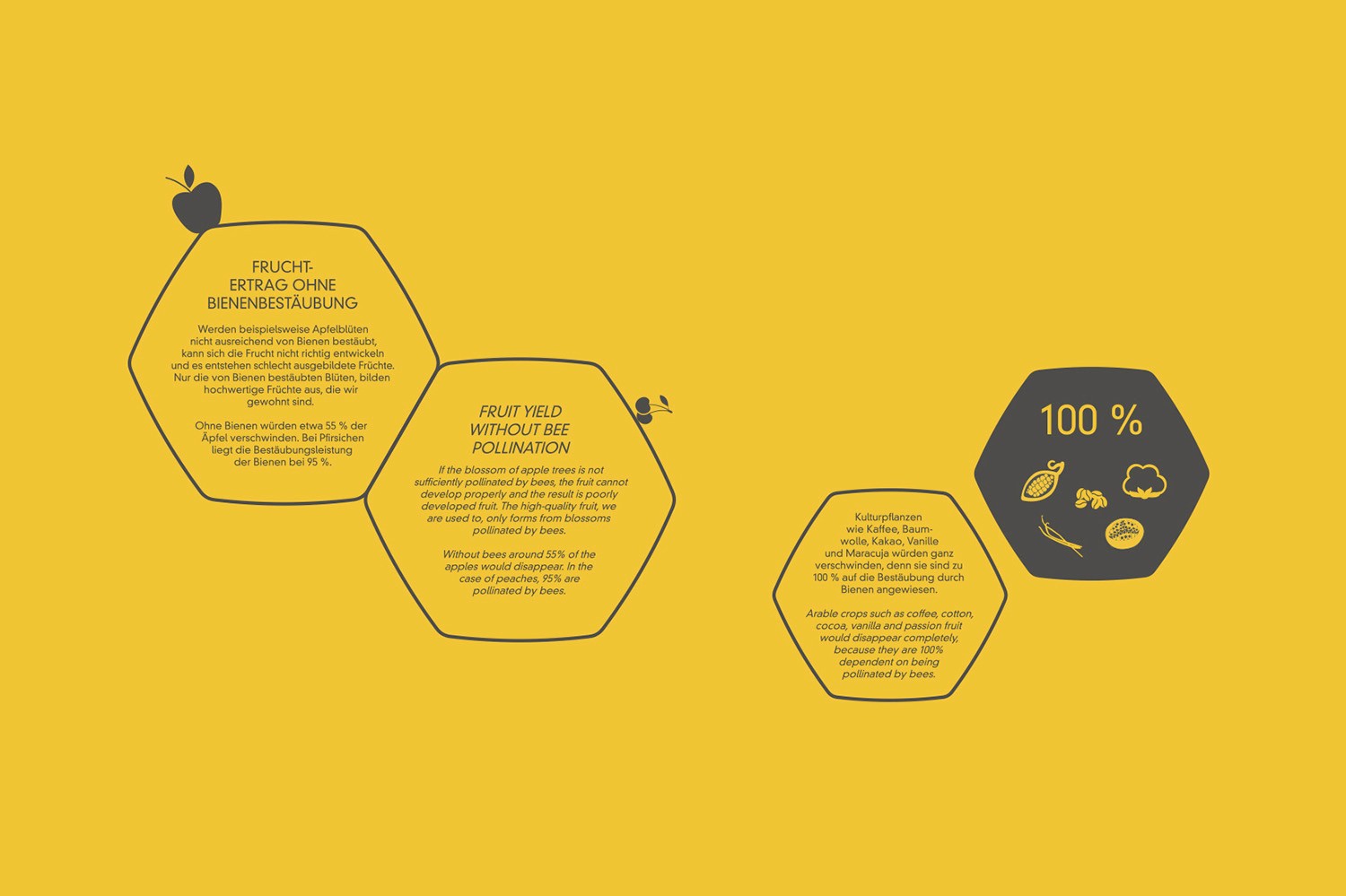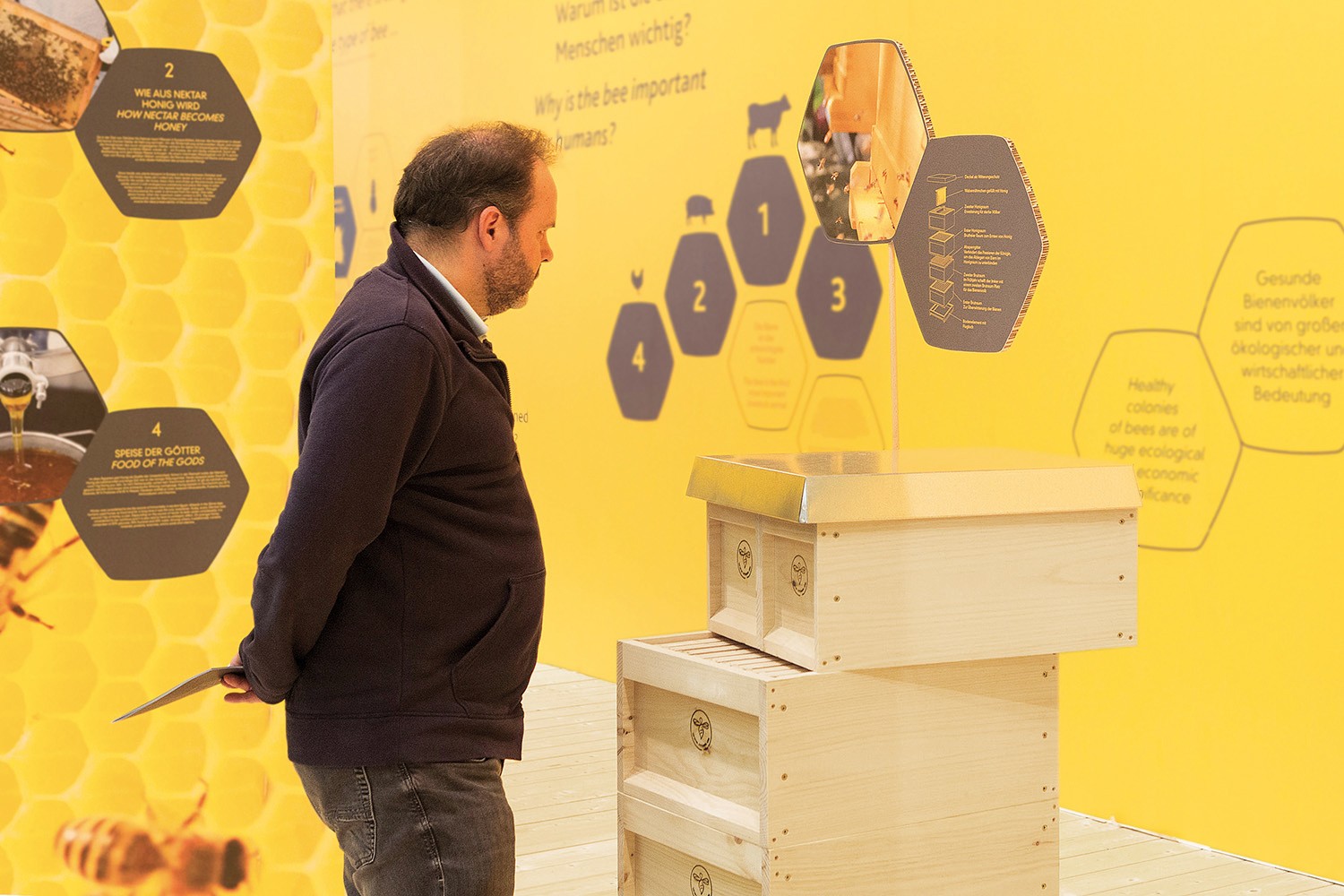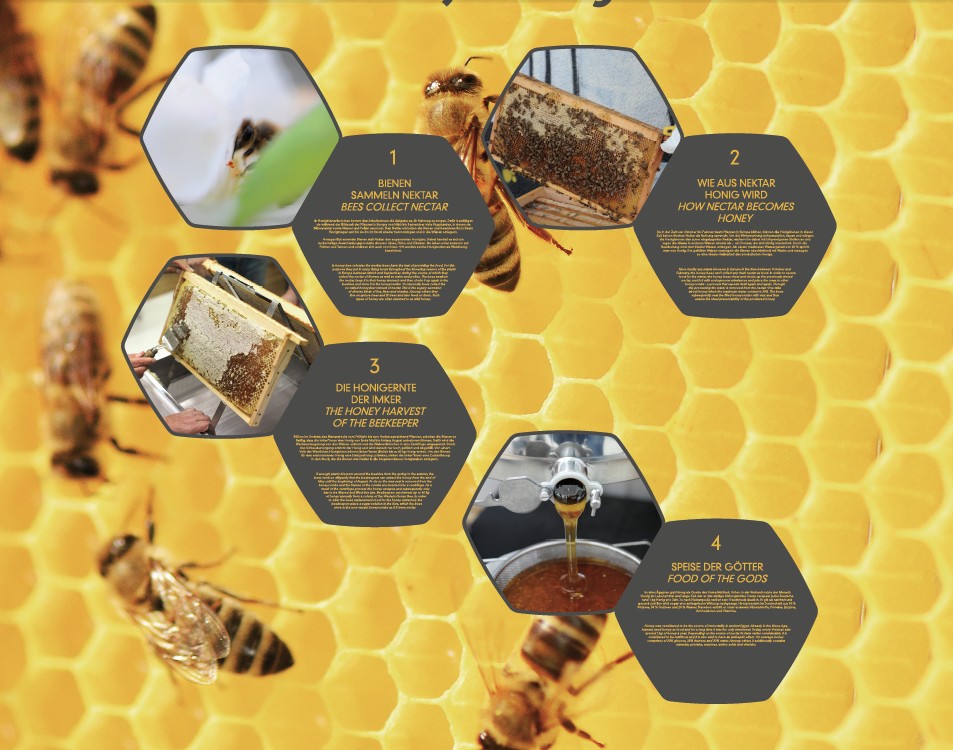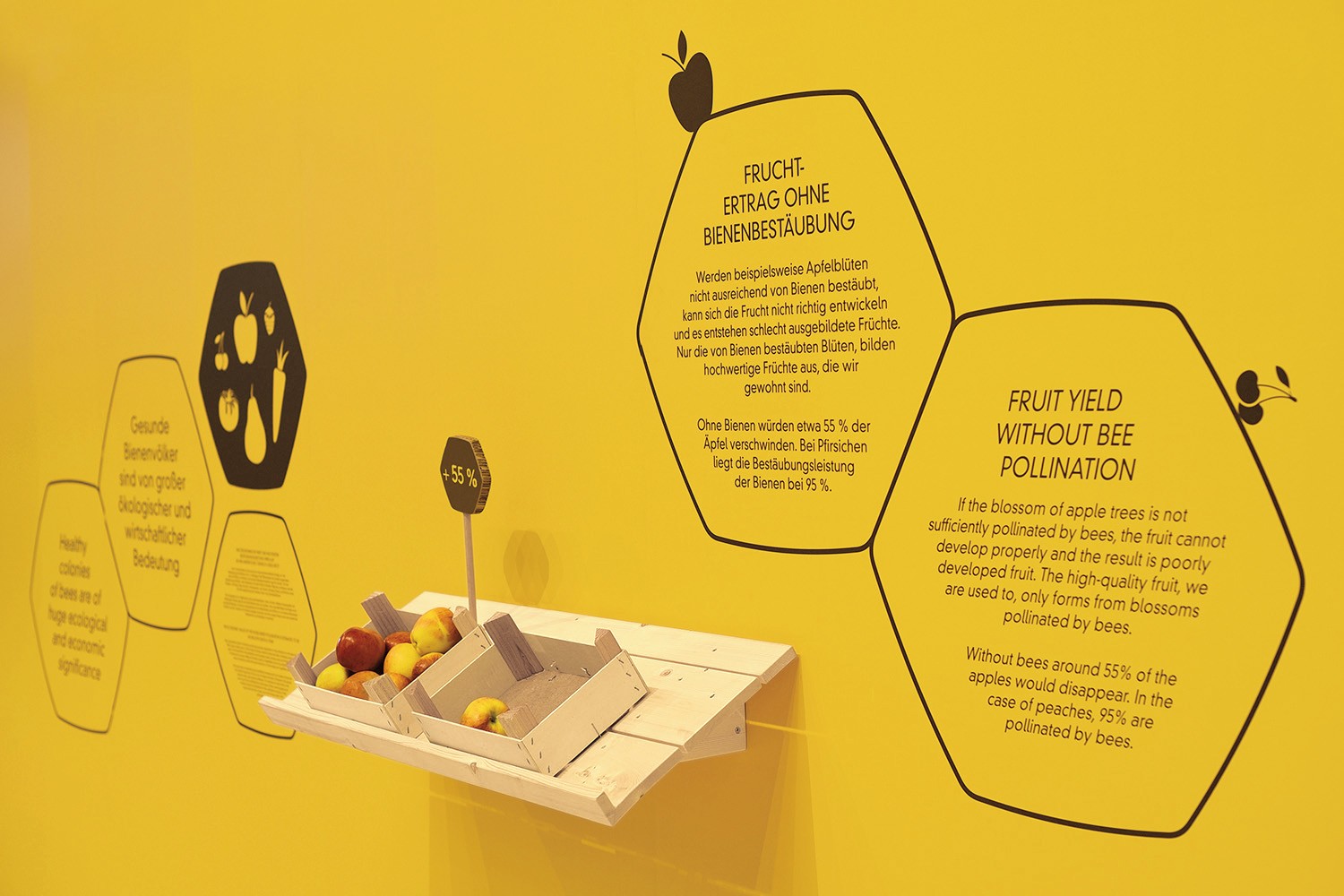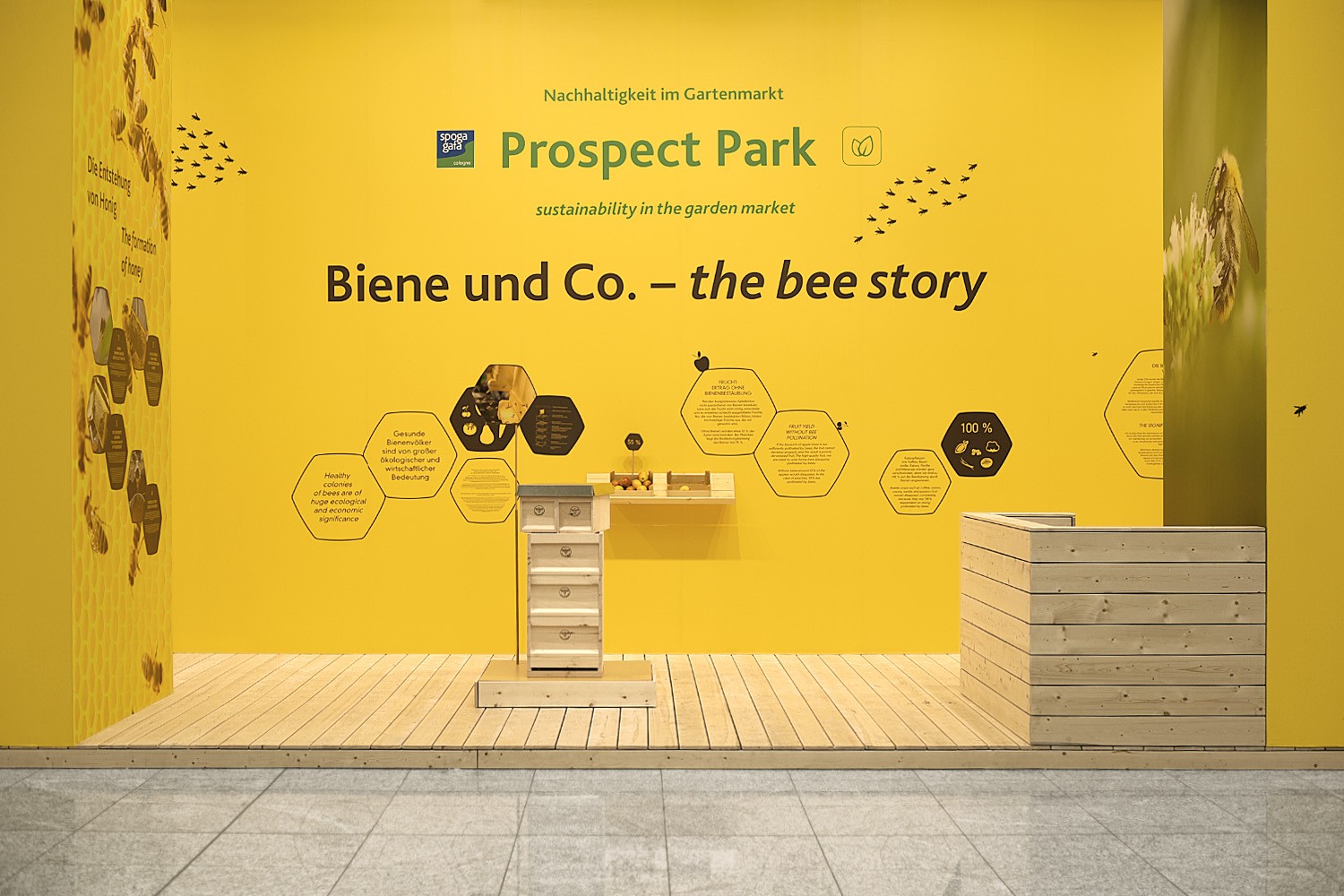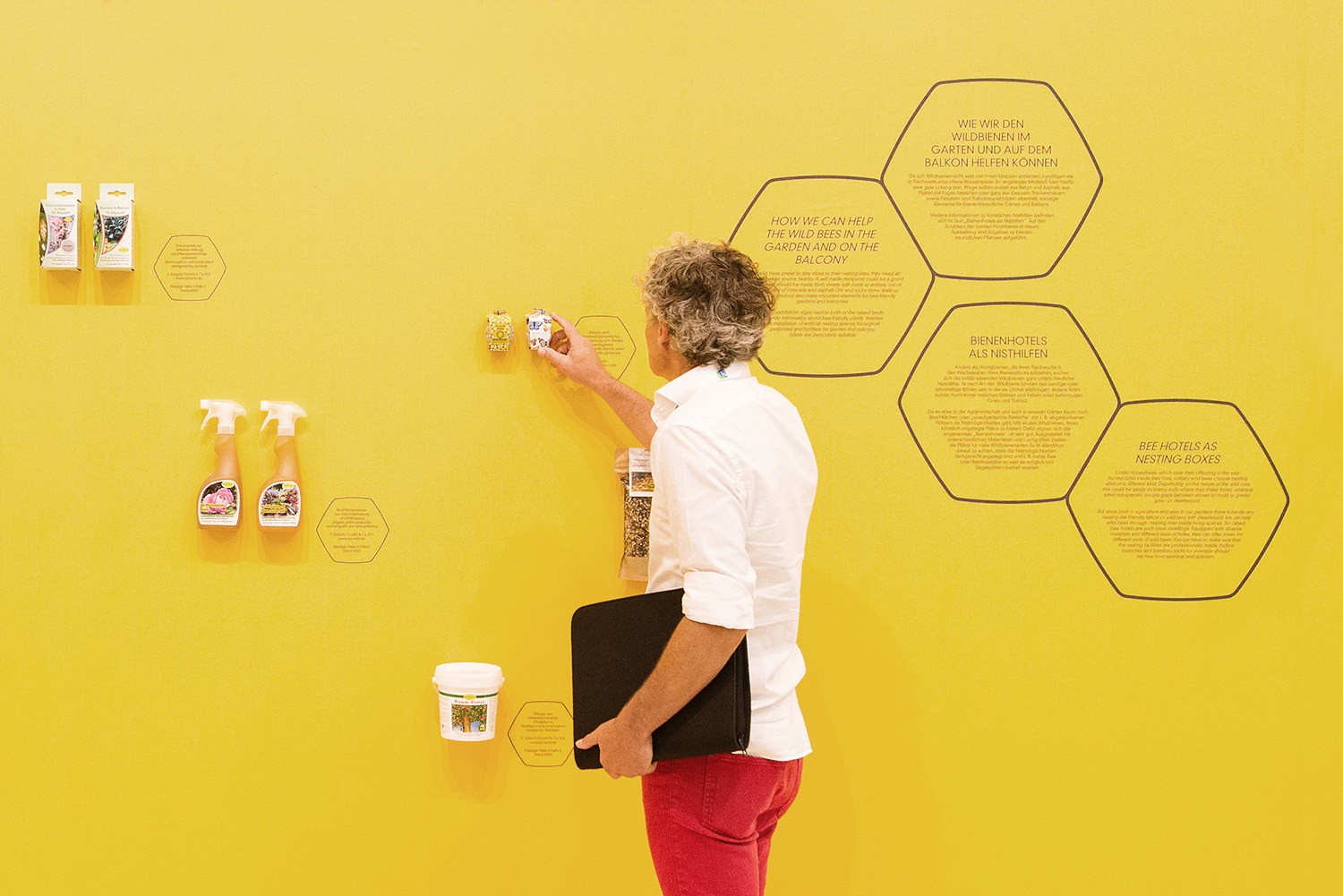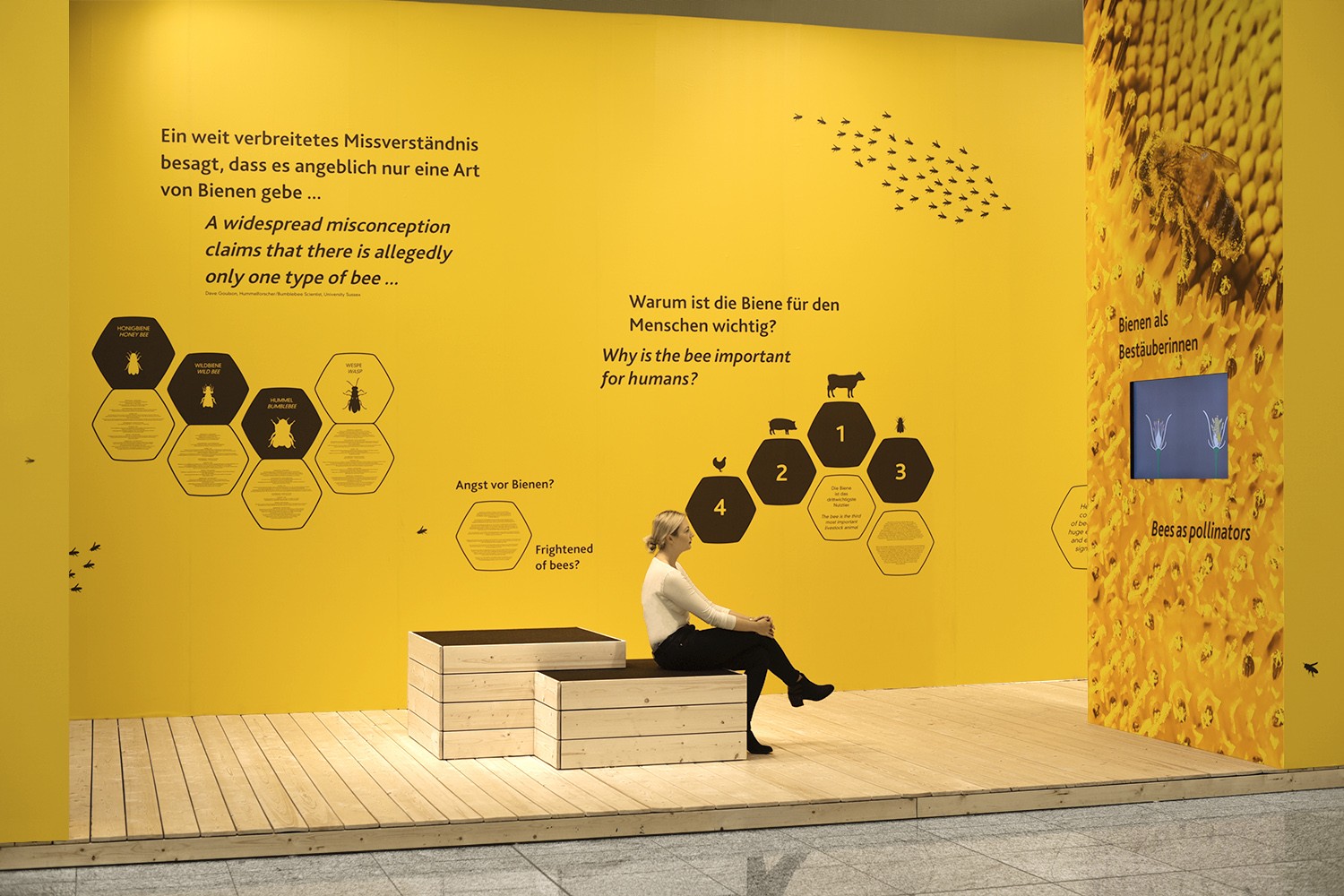Bees and Co. – the bee story
A public science project as a special exhibition for the international garden fair «spoga+gafa» in September 2016 in Cologne.
If you think of bees without any special prior knowledge, you think of the delicious honey and perhaps also the slight fear of being stung. But bees and co. are not doing well, they say. But why? And is that important?
With nine complementary subject areas, the sustainability project conveys basic information such as an overview of the different types of bees and their biological and economic importance. Spatial graphics and exhibits illustrate which foods would be missing if bees were no longer pollinating. Apples, for example, are 55% dependent on pollination by bees and peaches 95%. Crops such as coffee and cocoa, but
Cotton would also disappear completely because it is 100% dependent on bees.
What threatens bees and other creatures? How is honey made? What is the importance of wild bees? And how can you help bees in the garden and on the balcony?
In addition to concise descriptions and clear illustrations, answers are also provided by best practice products for garden care, examples of bee-friendly plants and the installation of various nesting options for a variety of endangered livestock insects.
Conception, editing, design, planning and support of the implementation: Knut Völzke, Vicky Corakas, Julian Schwarze, Steffen Reiter, Hans Hess
Client: Koelnmesse GmbH
Year of creation: 2016




Photo walls with infographics show how honey is made and what threatens bees and other insects.


An animated film shows how bees become pollinators in search of nectar for their food. In this way, they make a very important contribution to the preservation of biodiversity. The economic value of the global pollination service provided by bees is estimated at 265 billion euros annually.

It is not just nectar-rich flowers such as asters, ivy, chrysanthemums and sunflowers that are bee-friendly. Crops such as fruit trees and more than 15 flowering herbs such as mint, oregano, savory, lavender, rosemary and sage also enrich gardens and balconies and offer bees good sources of food from May to September.






